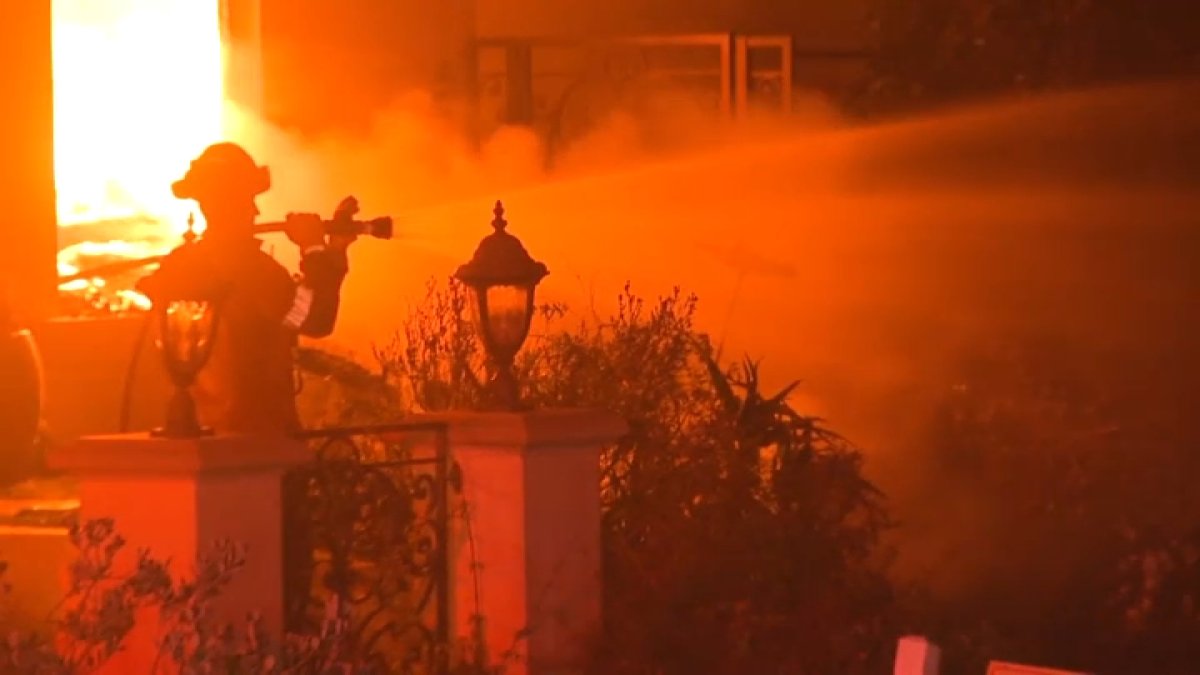Ten months after the Palisades Fire devastated homes and businesses, officials announced Wednesday they had arrested someone they believe started the flames.
However, Jonathan Rinderknecht, the man they took into custody, did not spark the fire on Jan. 7. Instead, the Palisades Fire was a result of what is called a “holdover” fire that began six days earlier.
Jonathan Rinderknecht, the man whom authorities arrested, is accused of starting the Lachman Fire, which began in the early hours of New Year’s Day. Although firefighters managed to put out the flames above ground, LAFD Interim Fire Chief Ronnie Villanueva said it remained burning underground.
“The Jan. 7 fire was not a rekindle or due to failed suppression, but the reactivation of an undetectable holdover fire under extraordinary wind conditions,” Villanueva said in a statement on Thursday. “Holdover fires can be nearly impossible to detect with infrared imaging, as smoldering often occurs deep below the surface.”
Once the strong Santa Ana winds picked up on Jan. 7, the Lachman Fire was reactivated, according to the LAFD. Extreme winds, combined with low humidity and prolonged drought, can lead to holdover fires to emerge and reignite above ground, Villanueva said.
“When a fire looks like it’s out, it could be down in the roots of the vegetation,” said Char Miller, director of environmental analysis at Pomona College. “At some point, that vegetation, because it’s weakened by the fire that’s just stayed in its roots, can flash out.”
The LA City Fire Department said many firefighters were allowed to go home after their shift despite the dangerously windy conditions. Robert Kovacik, Erik Leonard and Conan Nolan report for the NBC4 News at 6 p.m. on Wednesday, Oct. 8, 2025,
The fire department said holdover fires take the form of underground combustion, even after any visible flames appear to be out. These fires, also known as “sleeper fires,” can reignite 10 to 20 days after they seem to be fully contained, the LAFD said.
The LAFD said Southern California’s dry chaparral ecosystem is highly flammable, making holdover fires more common and hard to predict. Chaparral species, including manzanita and chamise, have lignified root systems that can go as deep as 25 feet below the surface, meaning thermal imaging cameras may be unable to detect holdover fires, the fire department said.
Officials said that for heat to be detected by thermal imaging devices, it must conduct through the soil and radiate outward. The dry soils where the Lachman Fire occurred prevented it from being detected underground because only the upper inch or two may show noticeable temperature differences, according to the LAFD.
“It’s really not that unusual,” Miller said. “In this case, because it was an urban conflagration, it had way more devastation. (It was) so difficult to deal with as a result.”
After Rinderknecht’s arrest was made public, the LAFD released a report on Wednesday regarding how it handled the Palisades Fire. The report contains a timeline of both the Lachman and Palisades Fires, as well as the nearly 100 “challenges” and 83 “successes” the fire department experienced in their response.

